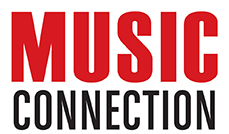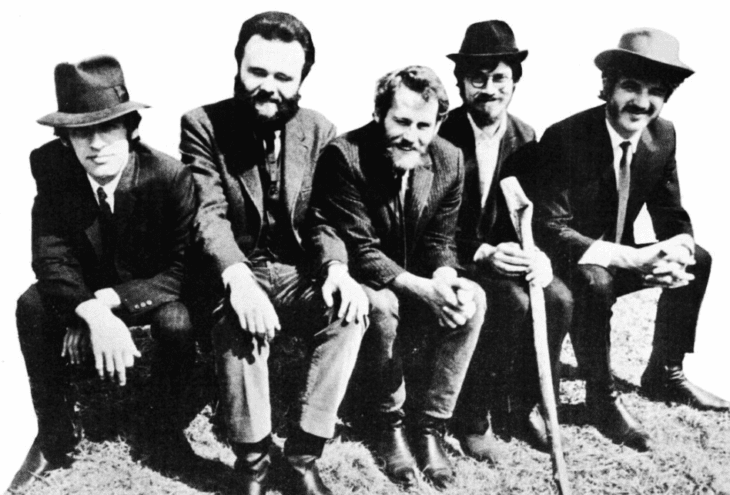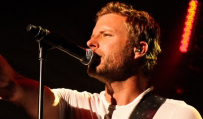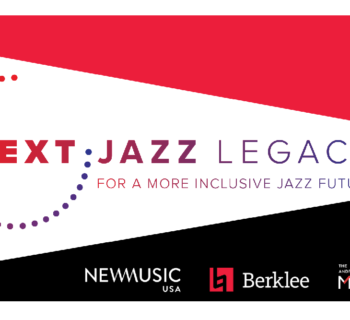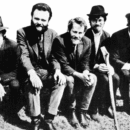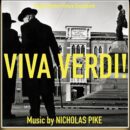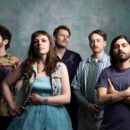On December 12, Capitol Records/UMe will release the newly remastered The Best of The Band on vinyl, CD and Super High Material CD. The long out-of-print LP version will be available on standard weight black vinyl, marking the first time it’s been available since the 1980s. Both the CD and SHM CD versions have been mastered for digital format, with the SHM CD utilizing a special polycarbonate material that leads to additional clarity, depth and definition of sound.

At the height of summer of 1976, the sun was setting on The Band. Having ushered in the decade’s folk-rock movement by seamlessly weaving elements of rock, blues, jazz and country, The Band was at its breaking point. Guitarist and songwriter Robbie Robertson was tired of the road and interested in exploring new musical avenues, pianist Richard Manuel was still recovering from a boating accident, and Garth Hudson, Levon Helm and Rick Danko were all ready to go their separate ways. As the group prepared for their farewell concert, they released The Best of The Band, a retrospective of timeless classics that would influence music for generations to come.
Released on July 16, 1976, The Best of The Band is a precursor to a landmark moment in music history. Having first formed in the 1960s as Ronnie Hawkins’ backing band, The Hawks, the group— Helm (drums, vocals, mandolin), Robertson (guitar, piano, vocals), Danko (bass, vocals, fiddle), Manuel (keyboards, vocals, drums), and Hudson (keyboards, horns)—would back Bob Dylan during his controversial electric “plugged-in” phase.
Rechristening themselves as The Band, the group recorded their landmark debut album, 1968’s Music From Big Pink, featuring “Tears of Rage” and the song that would become the group’s enduring signature, “The Weight.” Drawing from the American roots music panoply of country, blues, R&B, gospel, soul, rockabilly, the honking tenor sax tradition, hymns, funeral dirges, brass band music, folk, and rock 'n' roll, The Band forged their singular sound that would forever change the course of popular music.
The Band followed in 1969 with their masterpiece, their eponymous album, which would go on to be lovingly called The Brown Album for its iconic cover. With classics like “Up On Cripple Creek,” performed in a star-making moment on The Ed Sullivan Show, and “The Night They Drove Old Dixie Down,” The Band’s fame skyrocketed and their status was cemented as one of the most respected and exciting bands in years.
Between 1970-76, The Band released four studio albums, including 1970’s Stage Fright (“The Shape I’m In”), 1971’s Cahoots (“Life Is A Carnival”) and 1975’s Northern Lights—Southern Cross (“It Makes No Difference,” “Ophelia”) plus the 1972 live record, Rock Of Ages (“Don’t Do It”), recorded at the Academy Of Music in New York City, until exhaustion and creative differences were too much to handle. They opted to lower the curtain on Thanksgiving 1976 with a performance at the Winterland Ballroom in San Francisco.
The farewell gala would grow to include performances by friends such as Neil Young, Joni Mitchell, Van Morrison, Muddy Waters and Bob Dylan. Six weeks before the concert, Robertson reached out to filmmaker Martin Scorcesse to see if he’d film the show for posterity’s sake. The result was The Last Waltz, one of the greatest concert films ever made.
In the decades since their release, both The Last Waltz and The Best of the Band have stood as testaments to The Band’s undeniable place in rock and roll history. In 1994, The Band was inducted into the Rock and Roll Hall of Fame. Though every member has passed on, their legacy endures, and the upcoming The Best of the Band is at once both a perfect primer for those just discovering The Band’s genius and longtime fans eager to have the hits on vinyl once again.
The Best of The Band
Vinyl Track list
Side A
1. Up On Cripple Creek
2. The Shape I'm In
3. The Weight
4. It Makes No Difference
5. Life Is A Carnival
Side B
1. Twilight
2. Don’t Do It
3. Tears Of Rage
4. Stage Fright
5. Ophelia
6 The Night They Drove Old Dixie Down
CD Track list
1. Up On Cripple Creek
2. The Shape I'm In
3. The Weight
4. It Makes No Difference
5. Life Is A Carnival
6. Twilight
7. Don’t Do It
8. Tears Of Rage
9. Stage Fright
10. Ophelia
11. The Night They Drove Old Dixie Down
In other Band news, the sequel to Robbie Robertson’s New York Times bestselling memoir, Testimony, titled Insomnia, will be released November 11 via Penguin Random House. The late rock legend tells the story of his wild ride with Martin Scorsese – as friends, adventure-seekers, and boundary-pushing collaborators.

For four decades, Robertson produced music for Scorsese’s films, a relationship that began when Robertson convinced Scorsese to direct The Last Waltz, the iconic film of the Band’s farewell performance at the Winterland Ballroom on Thanksgiving 1976. Insomnia is an intimate portrait of a creative friendship between two titans of American arts, one that would explore the outer limits of excess and experience before returning to tell the tale.
Elliot Landy is a celebrated music photography artist and writer, who has captured some of the industry’s greatest names. His iconic works include portraits of rock music giants like Bob Dylan, Jimi Hendrix, Janis Joplin, The Band, Jim Morrison, and many others. As a photojournalist as well, his early career images documented and supported the rising tide of anti-war sentiment and spiritual awakening throughout the United States during the late 1960s. Since 1967 Elliott’s work has been published and exhibited in galleries and museums worldwide. He has published nine books on his photography.
Elliott Landy has announced a second volume of photos that he took of The Band. Ten years after the first edition that had long since sold out, the legendary photographer will publish The Band Photographs: 1968 – 1969 Two-Volume Set. The hardcover title, 12×12 inches, joins the two editions, with a combined 352 pages and nearly 400 photos. The book, via publisher Weldon Owen, arrives November 25, 2025. The title features a foreword by Eric Clapton and an introduction by Bruce Springsteen.
When you picture The Band, you have Landy’s photographs in your mind. He took the legendary photos in their 1968 debut album, Music From Big Pink, and The Band, their self-titled 1969 follow-up.

“I was the only photographer who had access to The Band during that period while living in Woodstock, NY,” he says. “Because we were friends, I had the freedom to hang out and take whatever pictures I wanted. I shot more than 10,000 frames of film of The Band during this period. Of these, fewer than 25 had been published prior to my 2015 book, The Band Photographs 1968-1969, which contained 200 photographs—most of which had never been published before.”
Want more on The Band? May I humbly suggest The Story of The Band From Big Pink to The Last Waltz that was published in 2018 by Sterling/Barnes & Noble. It’s a hardcover coffee table-size book I wrote with fellow author and musician, my brother Kenneth Kubernik.
Robbie Robertson always knew and respected my knowledge of The Band. Over nearly a half a century from 1976-2017 I conducted three extensive interviews with Robertson who praised my understanding of The Band.
I saw the group in concert eight times, including three Bob Dylan/Band Inglewood Forum shows on the 1974 tour, and attended The Last Waltz as a reporter for Melody Maker. I’m glimpsed in the documentary.
In January 2017 I interviewed Robertson inside his office at The Village Recorders in Westwood, California, upstairs from where the Band and Bob Dylan recorded Planet Waves in 1973 with engineer Rob Fabroni and the live ’74 Bob Dylan and The Band album Before the Flood was mixed.
During one chat, Robbie discussedcollaborating with Dylan onThe Basement Tapes.
“But we did have the experience with Bob Dylan and in doing The Basement Tapes with the songs that were supposed to be shared with other artists to record. It was because so many people recorded Bob’s songs and we were hooked up together, you thought ‘Oh. That’s part of it.’ And how that struck me I didn’t think about it in writing the songs or making the records that other people would do. This was a very interior thing. This was a thing between the five of us in the band. Something that we had collected over ages and pulled it together and made this gumbo.
“Bob already had such a track record that you thought people are going to be drawn to this. If he put something out there for people to record, people are going to be drawn to this. It just seemed to me that this was something he’s already established.
“Bob was involved in it. Garth was involved in it. Right? And part of it was just in fun. You know, we would record a song like ‘You Ain’t Going Nowhere.’ And Bob would say. ‘Whatta you think. Ferlin Husky? Right?’ And it was half kidding around and half meaning somebody is going to but with the way that he is and the way that he thinks too Bob that he could insist on sending that song to Ferlin Husky first. You know what I mean? Just because he would do something like that. But when we said ‘OK. We’ve got to pull some of these things. We were recording a lot of stuff. We were covering songs and just having fun. And then, every once in a while, there would be an original one in all of this.
“And when we were doing this not with Bob, this was the germs and the idea and the beginning of Music From Big Pink. That was happening kind of in the back room too. So, when we chose those songs to send out, we were choosing what we liked. We were kidding around. I didn’t notice Manfred Mann could do a really great job on ‘The Mighty Quinn.’ I didn’t know that. But we were saying ‘that ‘The Mighty Quinn’ thing has something to it.’”
The Band’s Music From Big Pink was on everybody’s turntable I knew in 1968. Their debut LP wasn’t really an outgrowth from road work with Dylan. Robertson and group members had previously logged some time in recording studios.
“When we hooked up with Bob Dylan it was made clear to Bob and to [our manager] Albert [Grossman], ‘this is a whistle stop for us.’ We are on our own path. We’ll do this in the meantime but we’re going to do our own thing. Right?’ After we did the thing with Bob and he wanted to do more. But he had this accident [in July 1966] and so then, and I say this in my book [Testimony], Albert had no idea what we were or what we could do. No idea. He liked us. He thought it was really interesting what we did with Bob. But he said ‘I think I can get you a deal for doing an album of instrumentals of Bob Dylan songs.’ So, I said, ‘All right. Let me talk to the guys about that.’ (laughs). And I thought, ‘Albert has no idea…’
The Band and Bob on stage. There was a thing that happened between Bob and The Band that when we played together that we would just go into a certain gear automatically. It was like instinctual, like you smelled something in the air, you know, and it made you hungry. (laughs). It was that instinctual.
“When we recorded Music From Big Pink, Albert was astonished by the results of that record. And he so embraced it and made it his own and all that other stuff vanished. He was like ‘I knew it all along.’ It fit so perfectly into his scenario. But we had gone to the edge together. And because we had done all that stuff and The Basement Tapes, and through all of this, still had no idea of what this was going to be when we did it. That was thrilling.”
This century I’ve interviewed the legendary songwriter and record producer Al Kooper a few different times. Last decade he reminisced about Music From Big Pink.
“I knew what was happening in 1968 with John Simon producing the debut Blood, Sweat & Tears album and the first Band album and should have had an early glimpse of what was going on,” Kooper admitted. “But at the time I was staying home and not going out.
“John used to call me up, right after the first BS&T album. ‘What are you doing?’ ‘You gotta come down to the studio and hear what he called, Robbie’s album.’
“I think John zeroed in on like the leader of The Band in this case. And John would call me over and over again and say, ‘You gotta come hear Robbie’s record.’ That’s what he called it. And I didn’t know what it was.
“John had an understanding of the singer songwriter. He was an erudite musician. And that was the important thing. That was the thing I learned from him. How to use that in the production of the record.
“And then I heard it when it was finished up at Albert Grossman’s office. I went, ‘Holy shit! This is ridiculous.’ I didn’t think it was gonna be like that. I had no idea what that was gonna be like. Up at Albert’s office they just played it. Side one and side two. And I kicked myself for not going to the sessions since I was invited.
“I later reviewed Music From Big Pink for Rolling Stone. ‘Music from Big Pink is an event and should be treated as one… There are people who will work their lives away in vain and not touch it.’”
Released during a long, turbulent season of war and socio-political unrest, and sandwiched between other culture-shifting 1967-‘68 albums by The Beatles (Sgt. Pepper’s Lonely Hearts Club Band and ‘The White Album’), Jimi Hendrix (Axis: Bold As Love), and The Rolling Stones (Beggars Banquet), Music from Big Pink astonished critics.
Writing for Rolling Stone, journalist Alfred G. Aronowitz proclaimed that Big Pink was “the kind of album that will have to open its own door to a new category.”
In his San Francisco Chronicle review, Ralph J. Gleason wrote, “The voices are unique and make a sound not available anywhere else in popular music that I know of. It is a rural sound, not on the country & western stations, yet not rural in the sense of lack of sophistication; I think it is hymnal… The songs are going to be American classics and it will not matter if there is no second album nor if The Band ever appears in person again.”
The Band album recorded their second self-titled LP inside Sammy Davis, Jr’s pool house in the Hollywood Hills.
I suggested to Robbie in one conversation that The Band and co-producer John Simon had started a new low-fi recording bio-regional process when a signed group with a major label record company moved into a home studio and did masters for albums and not just recorded demos.
“That’s where that Les Paul thing came back into the picture,” explained Robertson. “Before Big Pink, I had had this dream of having a workshop. A place. A sanctuary where we could go into the privacy of our own world and do something and not be on somebody else’s lawn to really be in our own environment let alone away from studio union breaks, so all of these things played into it a little bit. We go into a studio and the guy is like ‘well, it’s almost 4:00 pm…’ So, all of these things are playing into it and although the experience in the studio of recording Music From Big Pink was fabulous. The producer John Simon was great and the engineers were great at Phil Ramone’s place, all of it, but the idea of having this private sanctuary and that it would have its own sound. Its own sound and its own flavor.
“It would be like Chess Records. We could have our own one and it would not sound like any of these other places. Going into somebody’s environment and then saying, ‘you go over there. You sit here. And we’re gonna use this kind of microphone on you.’ I thought that was what you did with somebody else. ‘I feel like I’m getting seconds here.’
“I was thankful for that period of time too. Because it was now a period where an artist wanted to something that A&R guys like [Capitol Records engineer and staff producer] John Palladino had nothing to do with the music. He was never there when we recorded. No intrusion. So, when I said ‘we want to do this thing that started in the basement of Big Pink we want to bring the equipment to us in our own atmosphere. And we want to record at whatever time we feel the spirit. We don’t want to be on somebody’s clock.’ John was like ‘OK.’ ‘We just need the equipment to come to us.’ And he had to kind of go along with it, you know, but he didn’t understand it.
“We came to do it in Hollywood because it was too cold in Woodstock. [Laughs.] And we were from Canada. So, we knew cold and we knew when to get out of the way. So, we thought, ‘Wouldn’t it be wonderful to go and do this thing and go outside, where it feels beautiful and sunny and everywhere else it’s stormy.’ It was a good feeling inside and we felt we were getting away with something.
“Many years later when I went to Dublin, Ireland, to do some experimenting with U2 and they were recording in the living room of Adam [Clayton]’s house, and when I walked in, the producer Daniel Lanois, Edge and Bono said, ‘Does this feel familiar?’ And I didn’t quite understand what they meant.
“What they were saying was, ‘You are the guys who started this whole thing.’ When we did Stage Fright at the Woodstock Playhouse, we brought the equipment into that room. But it’s very common today.”
In my 1976 interview with Robertson for Crawdaddy, I wanted to know about one aspect of his songwriting with The Band, why he employed a third-person perspective on tunes like “The Weight,” “Stage Fright,” and particularly “The Night They Drove Old Dixie Down.”
“It’s just that it’s a part of storytelling. It isn’t anything to put the songs in the third person. Sometimes when you get that little detachment you can write about more. I’m Canadian and I wrote the song about the Civil War. I didn’t know the story, and it fascinated me. Everyone else took it for granted—they read about it in history class. When it’s strictly about yourself, you’re not allowed to deal with fiction. So, it’s something that opens the gates a little bit,” he underlined.
In my 2016 interview with Robbie Robertson for Record Collector News magazine, I asked what was it like for him when he hears The Band recordings on the radio or when compiling reissues. Was it a joyous or sad experience?
“I just feel extremely proud in the choice that we made to work together,” reinforced Robbie. “I absolutely feel there are moments when I think… ‘Whew…He’s the business. What talent. What an amazing emotional musical choice was made right there.’ I do feel those things.”
(Harvey Kubernik is the author of 20 books, including 2009’s Canyon Of Dreams: The Magic And The Music Of Laurel Canyon, 2014’s Turn Up The Radio! Rock, Pop and Roll In Los Angeles 1956-1972, 2015's Every Body Knows: Leonard Cohen, 2016's Heart of Gold Neil Young and 2017's 1967: A Complete Rock Music History of the Summer of Love. Sterling/Barnes and Noble in 2018 published Harvey and Kenneth Kubernik’s The Story Of The Band: From Big Pink To The Last Waltz. In 2021 the duo wrote Jimi Hendrix: Voodoo Child for Sterling/Barnes and Noble.
Otherworld Cottage Industries in 2020 published Harvey’s Docs That Rock, Music That Matters. His Screen Gems: (Pop Music Documentaries and Rock ‘n’ Roll TV Scenes) is scheduled for 2025 publication.
Harvey wrote the liner notes to CD re-releases of Carole King’s Tapestry, The Essential Carole King, Allen Ginsberg’s Kaddish, Elvis Presley The ’68 Comeback Special, The Ramones’ End of the Century and Big Brother & the Holding Company Captured Live at The Monterey International Pop Festival.
During 2006 Kubernik appeared at the special hearings by The Library of Congress in Hollywood, California, discussing archiving practices and audiotape preservation. In 2017 he lectured at the Rock and Roll Hall of Fame in Cleveland, Ohio, in their Distinguished Speakers Series. Amidst 2023, Harvey spoke at The Grammy Museum in Los Angeles discussing director Martin Scorsese's The Last Waltz music documentary.
Kubernik is in a documentary, The Sound of Protest now airing on the Apple TVOD TV broadcasting service. https://tv.apple.com › us › movie › the-sound-of-protest. Director Siobhan Logue’s endeavor features Smokey Robinson, Hozier, Skin (Skunk Anansie), Two-Tone's Jerry Dammers, Angélique Kidjo, Holly Johnson, David McAlmont, Rhiannon Giddens, and more.
Harvey is interviewed along with Iggy Pop, Bruce Johnston, Johnny Echols, the Bangles' Susanna Hoffs and Victoria Peterson, and the founding members of the Seeds in director Neil Norman’s documentary The Seeds - The Seeds: Pushin' Too Hard now streaming online on Vimeo. This November 2025, a DVD with bonus footage of the documentary is scheduled for release via the GNP Crescendo Company).
